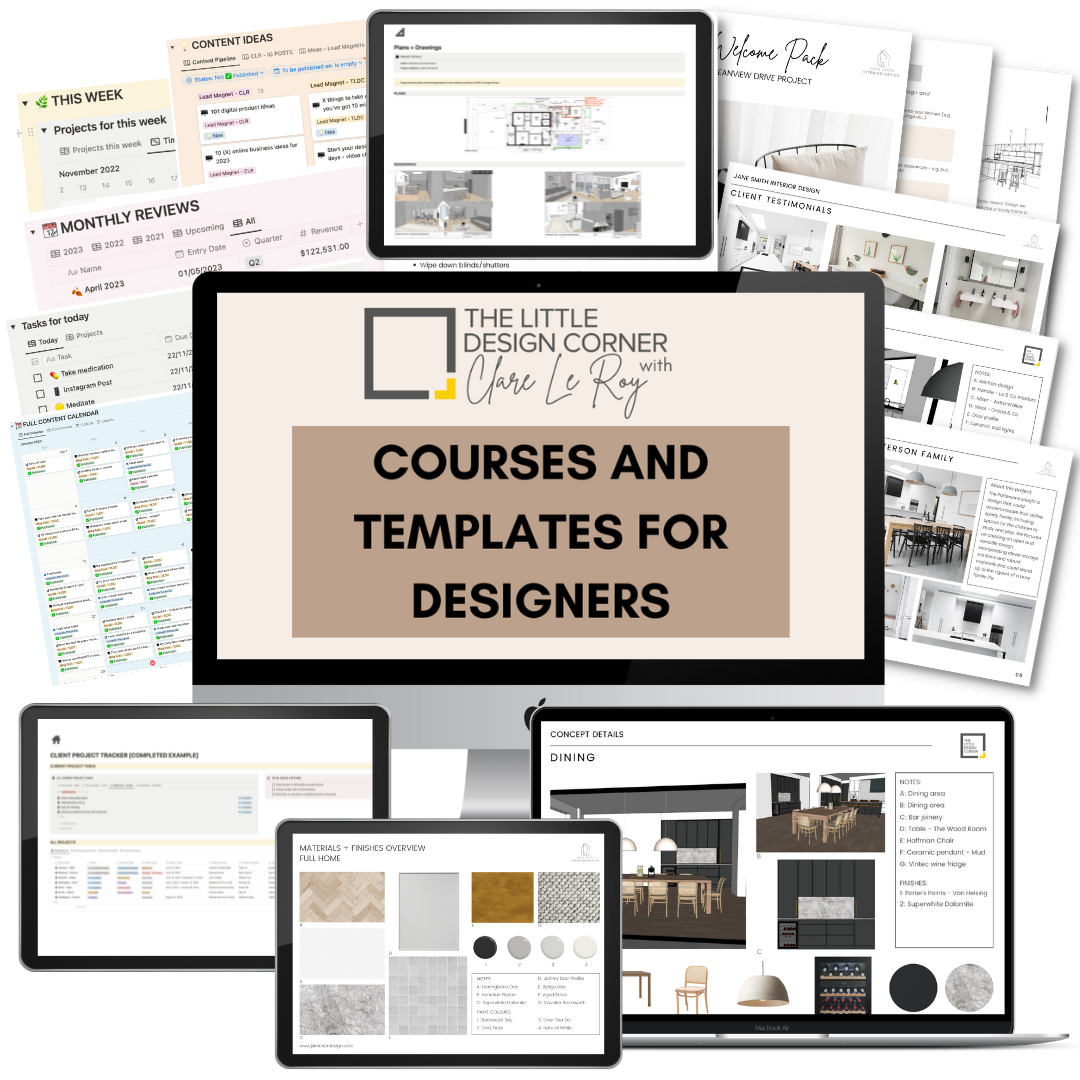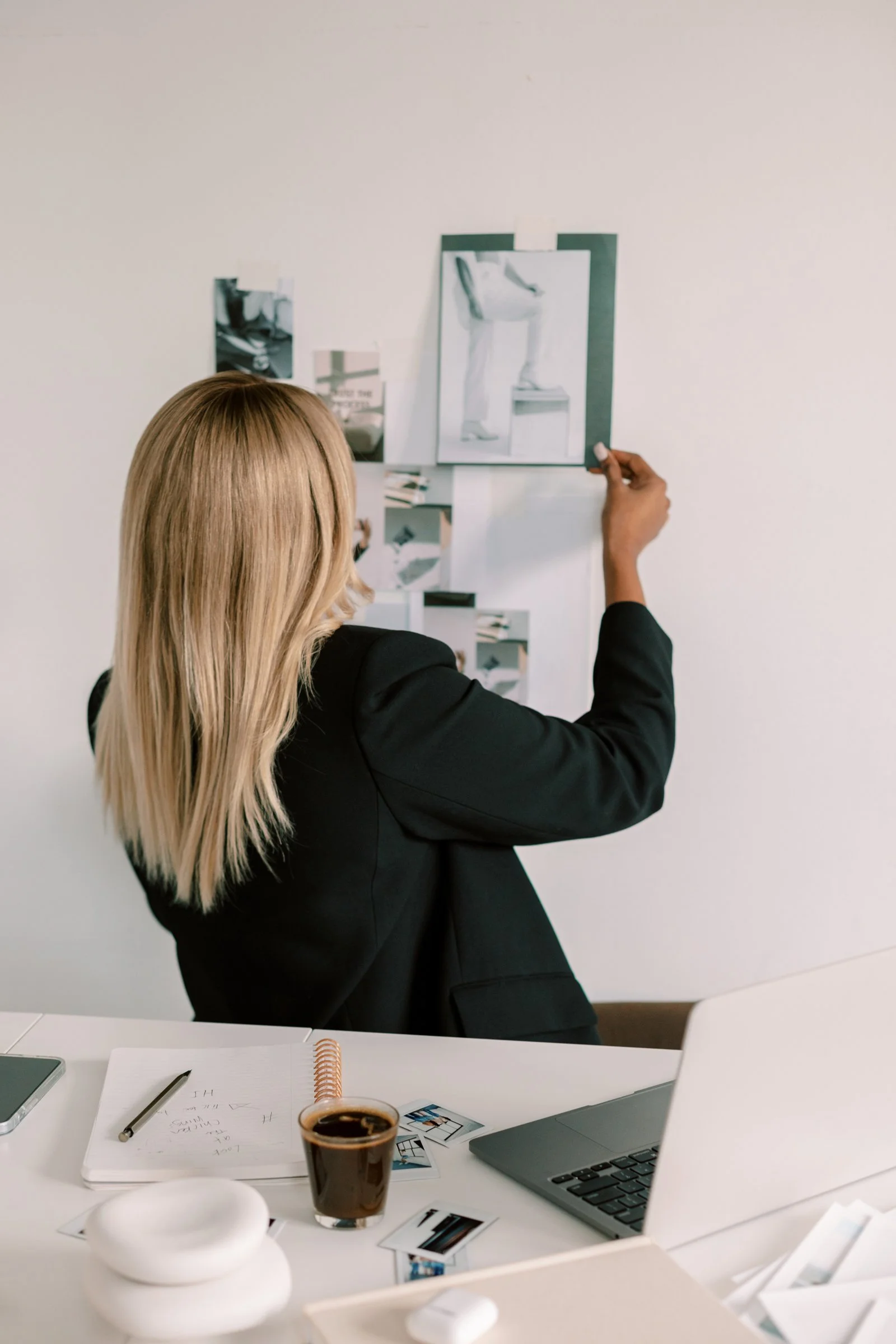What people don't tell you about working as a designer
Working as an interior designer is VERY stressful and not as glamorous as it might seem!
There’s also a lot of risk and pressure involved with design work, that many don’t realise when they enter the industry.
In this post I share just some of the aspects of the profession that can be stressful.
Mistakes
Mistakes can have serious consequences - both legally and in terms of the project’s success. This is one of the most stressful parts of working as a designer. Here’s a few reasons why:
legal consequences - mistakes in sign offs, design choices, selection of inappropriate materials, copyright issues or mismanaged contracts can lead to serious and very stressful legal problems and lawsuits
reputation - a significant error can harm your reputation and affect future client relationships - e.g. by leading to negative reviews or word of mouth
financial repercussions - mistakes may require costly fixes and if the designer is at fault will be their responsibility to pay for - this can lead to major profitability issues if they aren’t correctly insured
emotional repercussions - errors are just stressful in general and can be emotionally draining - they can also lead to self doubt and a loss of confidence.
Client Expectations
Clients normally like their designer the most of all the people involved in their project :)
This sounds like a good thing, but it actually means you can often be put in difficult positions where clients don’t know (or respect) what you’re responsible for and what is the responsibility of someone else involved in the project. Overstepping boundaries puts you and your business at risk and this can be very stressful to navigate.
You will also have to meet high expectations from clients and this creates a lot of pressure. You’re working on their most expensive asset so this is not something to take lightly! Being able to manage clients requires nuanced communication and negotiation skills.
From time to time you’ll also find that your vision won’t align with your client’s. Trying to reconcile their ideas with your professional recommendations and guiding them away from making bad choices requires a high level diplomacy.
Time Constraints
Projects often come with strict deadlines. Here’s some of the ways time constraints can be very stressful:
balancing multiple projects at a time (each with its own set of deadlines and expectations)
vendor delays (e.g. waiting for furniture or fixtures to arrive or being let down by vendors, which then has a negative impact on you)
approvals delays (waiting for approvals or permits from local councils/authorities can impact other project timelines)
resource scarcity (e.g. limited labour or materials can push out completion times)
revisions (e.g. if clients take too long to review or approve your designs and this then throws out your workflow and project timeline for other projects)
Budget Constraints
As a designer your job is to create aesthetically pleasing and functional spaces within the confines of a budget. Here’s why this can be stressful:
compromising your design - e.g. you may be forced to opt for lower quality products or materials, which can be annoying if you have a particular vision in mind
innovation - you will need strong product knowledge in order to be able to come up with novel solutions to meet budget constraints
client expectations - e.g. when clients want luxury finishes but you need to scale back due to budget
Financial Pressure
For those who are self employed or run their own business there are financial pressures like overheads, employee salaries and the constant need to find new clients to sustain the business.
Economic downturns, changes in consumer preferences and other market variables will also influence client demand and this causes financial instability and increased stress levels.
These financial pressures contribute to the overall stress of working as a designer and require not only design skills but a lot of sales and business knowledge (that many designers don’t have).
Emotional Investment
It’s easy to get emotionally invested in your projects.
Unlike many other professions, interior design is a creative art as much as it is a service. Criticism or negative feedback can therefore feel very personal.
Changes can also be difficult to accept and adjust to, especially when you don’t necessarily agree with some of the ideas being presented.
When clients request changes there is an emotional and logistical toll. It's not just a matter of tweaking a design - it can mean questioning the entire creative direction, which can be mentally exhausting (and also take a lot of time!).
These emotional complexities add another layer of stress to your work.
Lots of people enter the design industry as they are drawn to the creative challenge, but they don’t realise there are a lot of other risks and stresses involved with working as a designer.
This post isn’t intended to put you off, it’s just helping you go into it with your eyes open.
If you are keen to work as a designer make sure to go into the profession understanding what these pressures are and how you are going to deal with them.
Thanks for reading and catch you in my next post :)
Clare x
Dr Clare Le Roy
Courses and Templates for Designers and Architects
DO YOU WANT TO….
Improve your professionalism?
Find more clients?
Bring in more revenue?
Create better systems and processes?
Then check out my business courses and templates for designers and architects.
These courses and templates leave you with work done - not just a long list of things you need to do next. We have a really strong focus on taking action and getting things created that improve your business.








